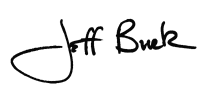Drag racing -- other than NHRA national event racing -- looks to be doing better than it has in a couple of decades. There is a steady stream of new tracks being built and old tracks getting refurbished and re-opened. There are more successful independent series in operation currently than in any other time in recent drag racing history. From “ nostalgia” nitro funny cars, Fuel Altereds, and Top Fuel bike series to eighth-mile Pro Mod circuits to all varieties of bracket racing, fans and racers are overloaded with options as to where they can race.
There are “big money” events weekly for ET and/or heads-up racers. ET racing has both “Box” and “No Box” races that regularly draw 200+ entries. “Nostalgia” events are a serious growth area for drag racing. Nostalgia nitro floppers are racing every weekend somewhere and it’s not just match racing. The NHRA Heritage Series and the Mickey Thompson Tire-backed DRO series is SERIOUS racing, make no mistake. The IHRA Nitro Jams are packing the stands in smaller venues. Kenny Nowling’s ADRL had a race at VMP and had over 180 entries, an all-time record for the nearly decade old doorslammers-only racing series.
So I’d say the “hobby” version of drag racing is thriving by offering racers and fans what they want: affordable and fun racing for the racers and reasonable ticket pricing for the fans. Drag racing fans will buy tickets to see 5-second nostalgia nitro cars for a “double sawbuck” (look it up), they will buy tickets to see 2800-lb doorslammers on radial tires race an eighth-mile and they will go to an ADRL show to watch Pro Mods that make the eighth mile in 3.5 seconds at over 200 mph….for free!
______________________________________________________________________________________________
One of the NHRA’s major problems is the “Groundhog Day” issue where every race and track is basically the same and the race cars now have the power to overpower any track regardless of how much “grip” it has. In professional golf when the players and equipment get so good that they take all of the challenge out of a course (or track, as the golfers refer to golf courses) the sanctioning body and greenskeepers groom the course to compensate. They make the putting surface hard, slick and fast. They grow the rough. They force the players to use all the clubs in the bag not just the driver and a pitching wedge.
So here is an idea that won’t cost a lot, might even save the tracks and the NHRA some money, and make the national events more entertaining. Almost every pro team has one of those devices that a crewmember puts in the groove on the starting line, then stands on and twists what appears to be a torque wrench in order to determine how sticky the track is. Currently the standard for NHRA track prep is on a scale of 1-10 (10 being the best) that the NHRA track crew labors to make both lanes as close to a 10 as they can at all times. An impossible feat to accomplish.
I suggest that NHRA’s Graham Light and his crew before each race take a look at the track and pick a friction number based on data from that traction  device and prep the track to, say, a 5, 6 or a 7 and then maintain at least that number throughout the event. All crew chiefs/tuners really want is a track that is close to the same every lap. They could use that to not only make racing more competitive and less one-sided, but they could also make driver and tuner skills much more of a factor in who win races. Too many times these days in NHRA professional racing lane choice often trumps tuner and driver skill on race day.
device and prep the track to, say, a 5, 6 or a 7 and then maintain at least that number throughout the event. All crew chiefs/tuners really want is a track that is close to the same every lap. They could use that to not only make racing more competitive and less one-sided, but they could also make driver and tuner skills much more of a factor in who win races. Too many times these days in NHRA professional racing lane choice often trumps tuner and driver skill on race day. ![]()


